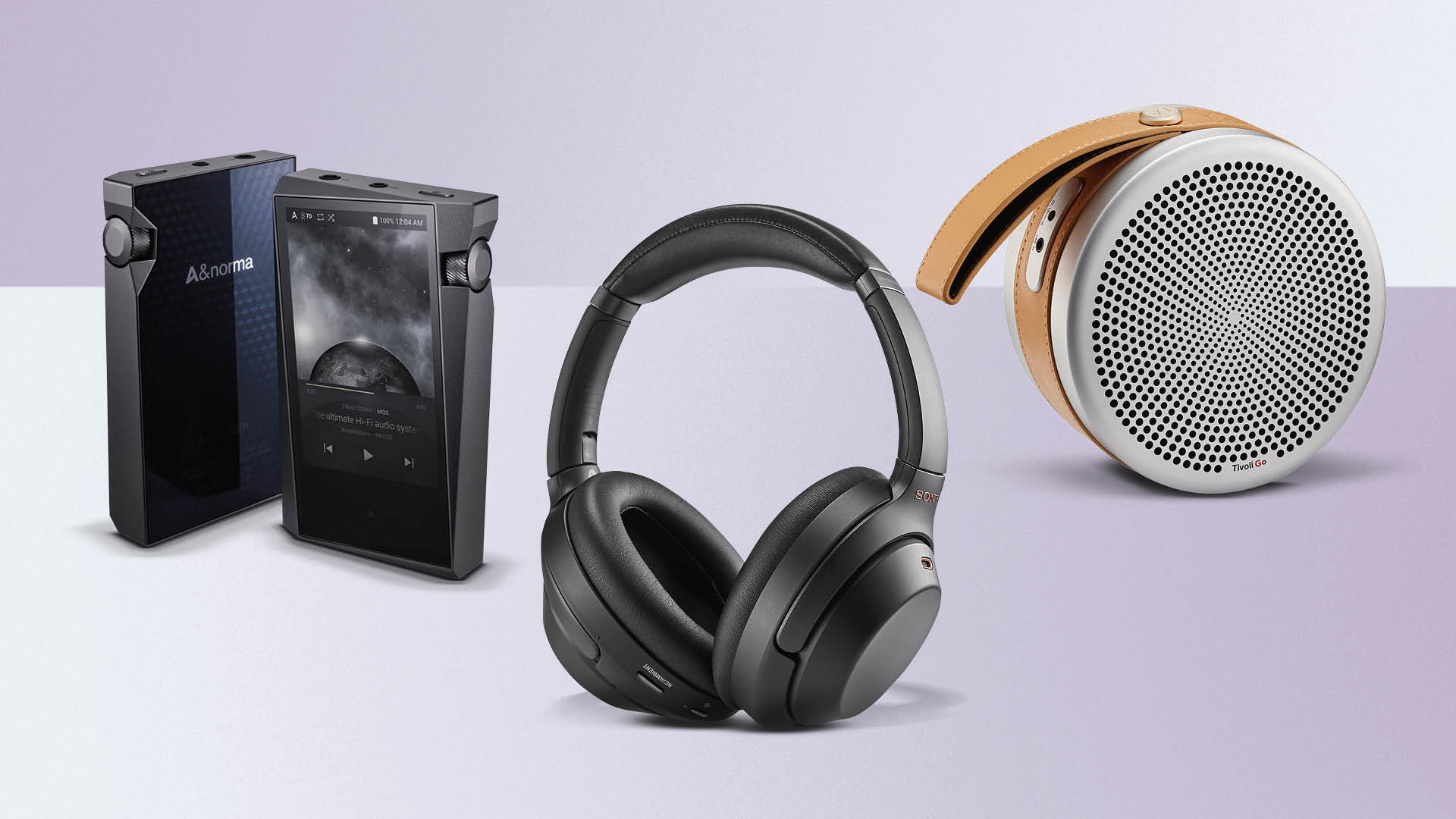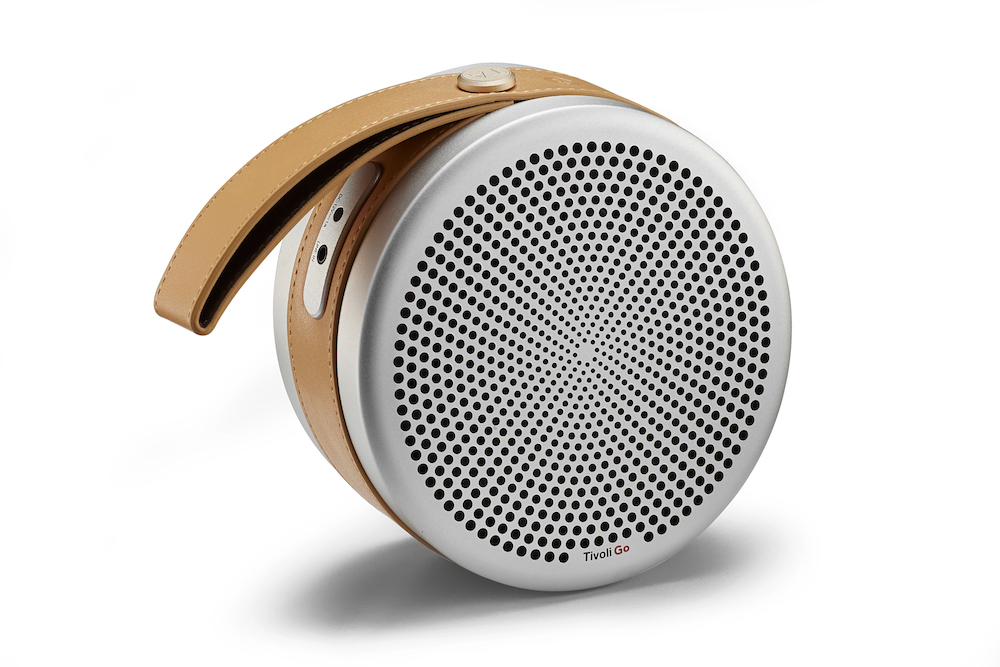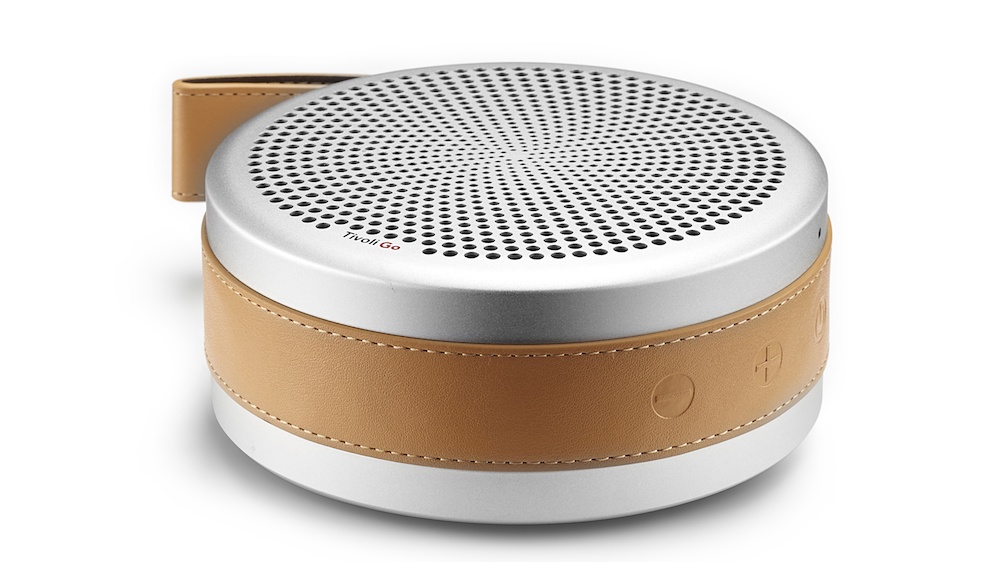Best portable music system 2018
Take your hi-res music with you wherever you are

The system:
- Portable music player: Astell & Kern A&norma SR15 – £599
- Noise-cancelling headphones: Sony WH-1000XM3 – £330
- Bluetooth speaker: Tivoli Andiamo – £189
- System total: £1118
Listening to your music was once restricted to the home and music on-the-go meant the car radio. But in the 1980s, personal portable players such as the Sony Walkman, changed all that – and the way we listen to music – forever.
Today’s portable music players are not only capable of playing hi-res music, but are also capable of storing thousands of albums worth of music in a case small enough to fit in your pocket.
For a system that allows you to enjoy your music while out and about, you’ll need a portable music player and a good pair of headphones – and, if you intend to play your tunes outdoors, a portable wireless speaker.

Its geometrically ambitious structure and distinctive name grab the attention, but the Astell & Kern A&norma SR15 portable music player maintains interest with a great sonic performance. The SR15 features dual-DACs, 3.5mm and balanced 2.5mm headphone jacks, 64GB built-in storage (expandable via microSD card), and built-in Bluetooth, wi-fi and Tidal.
It supports native DSD playback (to DSD64) in addition to PCM files up to 24-bit/192kHz.Italso functions as a preamp/DAC, and can be used solely as a digital source when connected to an external DAC or amplifier.
Weighing just 154g, the A&norma features A&K’s trademark aluminium chassis with protruding volume wheel, but its 3.3in screen is slightly off-kilter against the rectangular aluminium body, giving it a distinctive look. This sophisticated user interface also brings the A&norma closer to a slick smartphone experience.
Get the What Hi-Fi? Newsletter
The latest hi-fi, home cinema and tech news, reviews, buying advice and deals, direct to your inbox.
Fortunately, the A&norma has the sonic aspiration to match its design. This is a clear, crisp and transparent sound. Everything is full and lush, as the A&norma picks out the sonic intricacies and keeps them at the forefront of the composition, while building layers of music around them
Battery life is good too, with around nine hours play at reasonably high volumes, soyou will need a good pair of headphones for your commute. Here, we’d recommend the Sony WH-1000XM3s.

At first glance, the XM3s look similar to their predecessors, the XM2s, but the differences are almost entirely positive. The move from metal to plastic in the headband makes the new pair look slightly less premium, but means an overall weight saving of 20g.
Combined with a new, thicker, softer cushion, it feels as though there’s almost no weight resting on the top of your head, and the wider earpads help make these one of the most comfortable pairs of on-ears we’ve tested.
There’s a touch-sensitive panel on the right earcup. Double-tap for play/pause or to answer a call, swipe up or down to change volume, and forward or back to skip tracks. The controls are pretty accurate, but take some getting used to.
Sony has improved its noise-cancelling tech, which was already superior to most of its rivals. They are markedly better at blocking out the noise of a busy office, which is one of the trickiest feats to pull off. Constant sounds, such as a plane’s engine, are the bread and butter of a pair of noise-cancellers, and the M3s are an improvement here, too.
You have the option to keep noise-cancelling permanently on, even when not playing music, so you can use it to quieten everything down around you. Overall battery life remains unchanged at 30 hours, but the XM3s go from empty to full in three hours, rather than four hours on their predecessors.
But the big deal here is the move to analogue amplification. Sony has worked tirelessly to produce a chip that combines noise-cancelling, a DAC and an analogue amplifier in a form small and light enough for a pair of headphones.
All that effort has paid off, because the QN1 chip contained in the WH-1000XM3s offers a clear sonic upgrade. The M2s sound closed-in and almost dull by comparison. This is an open, spacious sound that gives every instrument, effect and vocal room to breathe.
With the increased comfort, improved noise-cancelling and serious audio ability – the sensational WH-1000XM3s are as close to the perfect pair of noise-cancelling headphones as it’s currently possible to find.

For outdoor sounds, the Tivoli Andiamo wireless speaker will complete your system. Made from lightweight aluminium with leather trimmings, this no-frills Bluetooth speaker is a lovely piece of kit. It’s a reasonably small metal puck – 135mm in diameter and 55mm high – with a 3.5mm aux-in socket for hard-wiring external sources, and the power socket for the battery, which is good for a claimed 20 hours of playback.
The Andiamo uses Bluetooth 3.0, and picks up your source promptly once it’s turned on. Control buttons are hidden neatly beneath the tooled leather strap. There are embossed icons on the strap for volume up and down, power and Bluetooth pairing. Though the speaker is portable – the strap is looped for easy handling – it is also right at home sitting on a table or shelf.
Under that aluminium casework lies a 6.5cm full-range driver and a 7.7cm passive driver to aid bass reproduction. The Andiamo uses 24-bit DSP equalisation to get the best from your music streams.
We put the unit on a shelf near a wall, fire up Tidal, and are impressed with what we hear. It may be small, but the Andiamo packs a sonic punch, with a sound way larger than you might imagine.

It isn’t just about decent power, though. This is a focused, snappy balanced sound and a really enjoyable listen. Bass is agile, but not overplayed, and everything hangs together beautifully. It’s a level of performance and articulation that is hard to find for this money.
However, as a relatively small speaker, it cannot possibly provide the bass reproduction a bigger unit can. When we take away the reinforcement of the wall, the Andiamo’s sound suffers. It’s still snappy and fun, but it’s undoubtedly better on a solid surface.
The Tivoli Andiamo manages to pull off the seemingly impossible, a ‘lifestyle’ product with a sound that comfortably matches its price. That’s not something we thought we’d say when we took the little aluminium puck out of its box.
What Hi-Fi?, founded in 1976, is the world's leading independent guide to buying and owning hi-fi and home entertainment products. Our comprehensive tests help you buy the very best for your money, with our advice sections giving you step-by-step information on how to get even more from your music and movies. Everything is tested by our dedicated team of in-house reviewers in our custom-built test rooms in London, Reading and Bath. Our coveted five-star rating and Awards are recognised all over the world as the ultimate seal of approval, so you can buy with absolute confidence.

